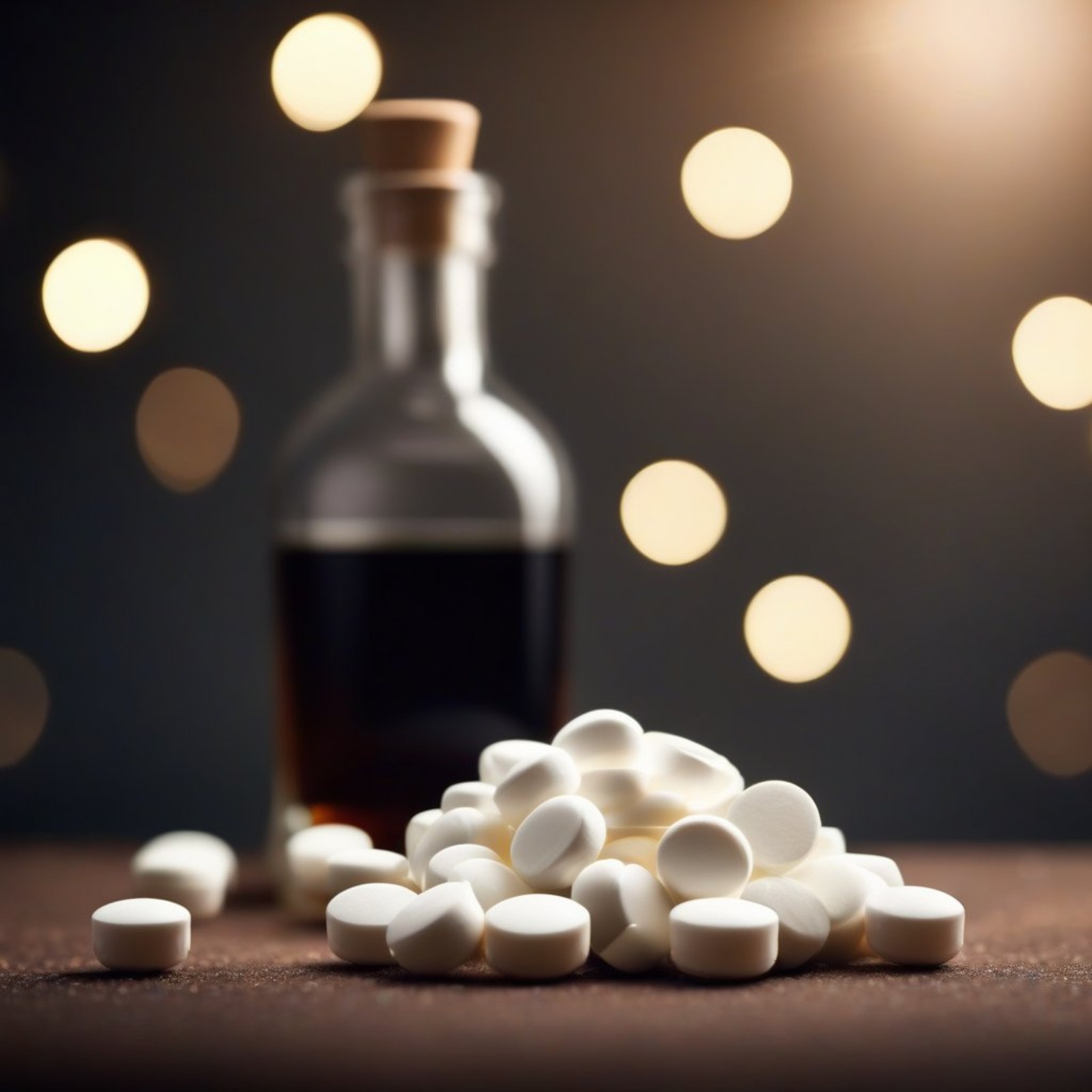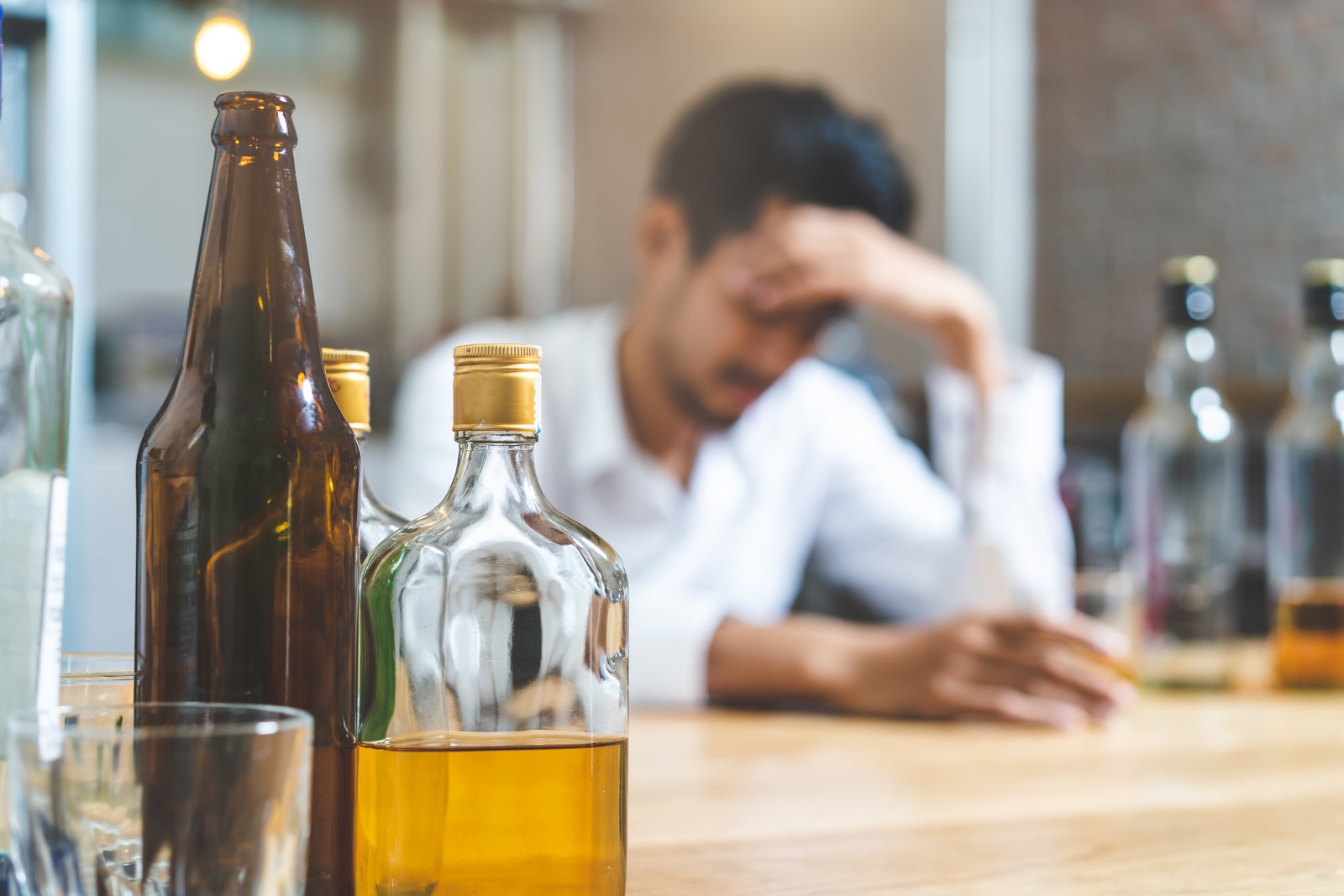Substances | 5 min read
What Happens When Mixing Claritin and Alcohol? Understand & Avoid The Risks
Medically Reviewed By

On January 15, 2024
Written By
On January 15, 2024

What you will learn
- Claritin is a non-drowsy antihistamine, and alcohol is a CNS depressant.
- Mixing Claritin, a non-drowsy antihistamine, with alcohol may not significantly intensify the effects of both.
- Some possible reactions to co-occurring Claritin and alcohol use are drowsiness, dizziness, and increased risk of overdose.
It’s never a good idea to mix substances without consulting a medical professional. Even seasonal allergy medications like Claritin can cause health risks when taken with alcohol.
Mixing Claritin and Alcohol
Claritin and alcohol are both substances that have a unique effect on your body. If dosed simultaneously, your physical and chemical response is altered from what would be considered normal for you. Mixing Claritin and alcohol does not significantly increase the risk of overdose.
While Claritin can affect wakefulness, it is unlikely to cause an overdose, especially when combined with alcohol. However, it is advisable to avoid or limit alcohol consumption while taking Claritin due to potential increased drowsiness or dizziness.
Claritin
Invented in 1976 and approved for use in 1993, Claritin has been the salvation of seasonal allergy sufferers for over twenty years.
Claritin’s active ingredient is Loratadine, and it is billed as a “non-drowsy antihistamine.” Loratadine works by blocking your H1 histamine receptors, which blunts the experience of allergy symptoms. It blocks the physical symptoms of hay fever, dust, pollen, or other airborne allergens such as[1]:
- Skin redness caused by hives
- Itchy eyes, nose, or throat
- Watery eyes
- Sneezing
Whereas allergies can affect the nose, throat, eyes, skin, and tongue, asthma affects the lungs. The presence of allergens can trigger both conditions.
For reasons we still do not understand, the acute sensitization of kids to allergens began in the 1960s with the cultural shift to entertaining children indoors[2]. Inactivity could be a contributing factor to pediatric asthma.
While not everyone with allergies has asthma, and vice versa, sometimes allergens can activate asthma symptoms. While Claritin isn’t considered a first-line treatment for asthma, it can help relieve allergy symptoms that trigger asthma symptoms.
Claritin is not a replacement treatment for acute asthma symptoms (such as an inhaler).
Claritin is considered safe for kids to take.
What are Histamines?
Great question. Histamines are chemicals your body produces, present in every one of your tissues.[3]
While they have many functions, histamines are generally scourged as the principal agent that initiates allergic reactions. Allergies are a reaction to a foreign, usually harmless protein that enters our body.[4]
While there are 4 histamine receptors in your body, Claritin is an H1 histamine antagonist. It binds to the H1 histamine receptors, so the real histamine can’t. And, if your receptors can’t bind with histamine, then you can’t have physical symptoms of allergic reactions.
However, histamine also regulates a host of other lesser-known functions, such as:[5]
- Wakefulness
- Appetite control
- Body temperature
- Aggressive behavior
- Locomotion (e.g., moving around)
- Memory
- Learning
What are the Side Effects of Claritin?
Some common side effects of Claritin include:[6]
- Headache
- Dry mouth
- Bleeding from nose
- Soreness when swallowing
- Mouth sores
- Disturbed wakefulness cycle
- Anxiety
- Generalized weakness
- Stomach pain
- Diarrhea
- Red/Itchy eyes
Though rare, it’s possible to have an allergic reaction to loratadine. The symptoms of an allergy to loratadine will be nearly identical to the allergy you may be trying to medicate. If you experience any of the following symptoms, regardless of whether you think it’s due to the loratadine or the allergy, stop taking loratadine and seek immediate medical help:[7]
- Rashes
- Hives
- Uncontrolled itching
- Swelling of any part of your body
- Hoarseness
- Difficulty breathing or swallowing (constricted airway)
- Wheezing
Loratadine is a maintenance antihistamine drug and not a replacement for life-threatening allergic reactions, like with an EpiPen.
Alcohol Facts and Effects
Alcohol was invented thousands of years ago and continues to be enjoyed today. Principally, alcohol is the fermentation of sugar into ethanol. The sugar can come from fruit, corn, wheat, rye, oats, and even milk (lactose). The active ingredient in alcohol is ethanol.
Ethanol is a depressant, which means it slows down the messages traveling up and down your central nervous system. Symptoms of drinking too much alcohol include:[8]
- Drowsiness
- Slurred speech
- Confusion
- Vomiting
- Seizures
- Difficulty breathing
- Slowed heart rate
- Clammy skin
- Low body temperature
What Is Ethanol?
Once again, great question. Ethanol is the active ingredient in the drink we call alcohol.
Ethanol functions by binding to and altering the function of specific proteins, particularly both membrane-bound and voltage-dependent ion channels.[9] Ethanol is a toxin and must be metabolized by your liver and then excreted by the kidneys.
It’s a water-soluble molecule, which means it gets absorbed into your bloodstream and transported to nearly every organ in your body.[10] Organs with a richer blood supply, like the brain and lungs, get a higher concentration of alcohol.
Men can safely ingest more ethanol than women because they have more blood to disperse it throughout.
Ethanol initially causes a release of dopamine from your central nervous system. However, within a few hours, the blood plasma concentration will fall beneath the threshold necessary to sustain these effects. Once that happens, the depressant effects of ethanol will set in.
What Happens When You Mix Claritin and Alcohol?
Taking Claritin while drinking alcohol may cause increased drowsiness or dizziness, but it does not significantly increase the risk of overdose due to alcohol consumption. Claritin, being a non-drowsy antihistamine, generally does not have strong sedative effects.
Claritin (loratadine) is categorized as a non-drowsy antihistamine and typically does not cause significant drowsiness. Mixing it with alcohol may lead to increased drowsiness or dizziness, but it does not greatly increase the risk of an alcohol overdose. Each individual may react differently, so it’s advisable to use caution and consult a healthcare provider.
Even though Claritin is marketed as “non-drowsy,” it still disrupts your histamine levels and your sleep-wakefulness cycle.
When drinking alcohol, some people self-regulate when to stop drinking by waiting until they start to feel drowsy. If those same people also take Claritin, the distance between drowsy and unconscious gets much closer due to the disrupted histamine levels.
It’s harder to stay awake when you are actively blocking the H1 histamine receptors from binding to histamine. Combined with the depressant effects of alcohol, you could overdose more quickly than you are used to. Some possible reactions to co-occurring Claritin and alcohol use are:[11]
- Drowsiness
- Dizziness
- Increased risk of overdose
It is always recommended that you consult a physician before mixing alcohol with any medication, prescription, or over-the-counter.
Treatment For Polysubstance Use and Substance Use Disorder
If you suffer from polysubstance use or substance use disorder, seek treatment immediately. Find qualified, professional help today.
From detox placement, partial care, and intensive outpatient programs to outpatient, dual diagnosis, and treatment for co-occurring disorders, there is guaranteed to be a program to meet your needs.
At Ascendant NY, our mission is to deliver compassionate care that leads clients toward long-term recovery. Substance use can put our minds and our lives on autopilot; we use several different therapies to restore the balance in mind, body, and soul. These therapies include:
- Cognitive behavioral therapy (CBT)
- Dialectical behavioral therapy (DBT)
- Acceptance and commitment therapy (ACT)
- Interpersonal therapy (ICT)
- Art therapy
- Yoga therapy
- Martial arts therapy (Muay Thai)
- Hypnotherapy
- Music therapy
- Family therapy
Restore Health and Safety Today
Mixing Claritin and alcohol has the potential to exacerbate the effects of each other. If you are suffering from polysubstance abuse, seek treatment immediately.
Find a qualified addiction treatment center with licensed professionals who can lead you toward recovery. Get an individualized treatment plan today to get back on the trajectory to sober living. Your life is too valuable not to live in control.
The journey of a thousand miles begins with a single step. Take that step today, and start living the rest of your life.
Frequently Asked Questions About Claritin and Alcohol
Claritin helps to block physical symptoms of allergic reactions. These include skin redness, itchy eyes, nose and throat, watery eyes, and sneezing.
It does this by blocking histamines from binding to the H1 histamine receptors. This also disrupts your wakefulness cycle. Appetite control, body temperature, locomotion, memory, and learning are also affected by blocking histamines.
Claritin is non-addictive and can be taken as long as necessary.
But, because histamines affect a wide range of bodily functions, an antihistamine should not be taken longer than necessary.
Taking Claritin daily could lead to long-term weight gain, heat sensitivity, muscle weakness or spasms, memory and learning impairment, and aggressive behavior. Claritin is a good supplement for seasonal allergy relief.
If you need continuous protection from physical allergy symptoms, talk to your doctor about immunotherapy options. It could take months or years, but it will be better for you than year-round Claritin dosing.
You should generally wait at least 24 hours after drinking to take Claritin.
Conversely, you should wait at least 48 hours after taking Claritin to start drinking alcohol. Claritin takes around 4 days to be eliminated from your body.[12]
If you’ve been drinking and start to experience an allergic reaction, wait at least eight hours bare minimum, before taking Claritin (alcohol’s blood plasma concentration will be below 25%).[13]
There are many different suggestions on what time is the right time. Whatever number you settle on should account for the fact that co-occurring Claritin and alcohol use is dangerous. Separating them by an adequate length of time is wise.
Alcohol can impact histamine levels in the body and may exacerbate symptoms in individuals sensitive to histamines. This is because most alcoholic beverages contain histamines, and alcohol can inhibit the enzyme that breaks down histamine, potentially leading to increased histamine levels and worsening symptoms like flushing, headaches, and nasal congestion.
Ascendant New York Editorial Guidelines
Here at Ascendant New York, we understand the importance of having access to accurate medical information you can trust, especially when you or a loved one is suffering from addiction. Find out more on our policy.
[1][6][7] U.S. National Library of Medicine. (n.d.). Loratadine: Medlineplus drug information. MedlinePlus. https://medlineplus.gov/druginfo/meds/a697038.html
[2][4] Allergens, sources, particles, and molecules: Why do we make IGE … (n.d.). https://www.ncbi.nlm.nih.gov/pmc/articles/PMC5406225/
[3][5] Biochemistry, histamine – statpearls – NCBI bookshelf. (n.d.-b). https://www.ncbi.nlm.nih.gov/books/NBK557790/
[8] U.S. Department of Health and Human Services. (n.d.). Understanding the dangers of alcohol overdose. National Institute on Alcohol Abuse and Alcoholism. https://www.niaaa.nih.gov/publications/brochures-and-fact-sheets/understanding-dangers-of-alcohol-overdose
[9] Davies, M. (2003, July). The role of Gabaa receptors in mediating the effects of alcohol in the Central Nervous System. Journal of psychiatry & neuroscience : JPN. https://www.ncbi.nlm.nih.gov/pmc/articles/PMC165791/
[10][13] ABC of alcohol: Alcohol in the body – PMC – national center for … (n.d.-a). https://www.ncbi.nlm.nih.gov/pmc/articles/PMC543875/
[11] U.S. Department of Health and Human Services. (n.d.-a). Harmful interactions. National Institute on Alcohol Abuse and Alcoholism. https://www.niaaa.nih.gov/publications/brochures-and-fact-sheets/harmful-interactions-mixing-alcohol-with-medicines
[12] H1 antihistamines: Current status and Future Directions – PMC. (n.d.-e). https://www.ncbi.nlm.nih.gov/pmc/articles/PMC3650962/




